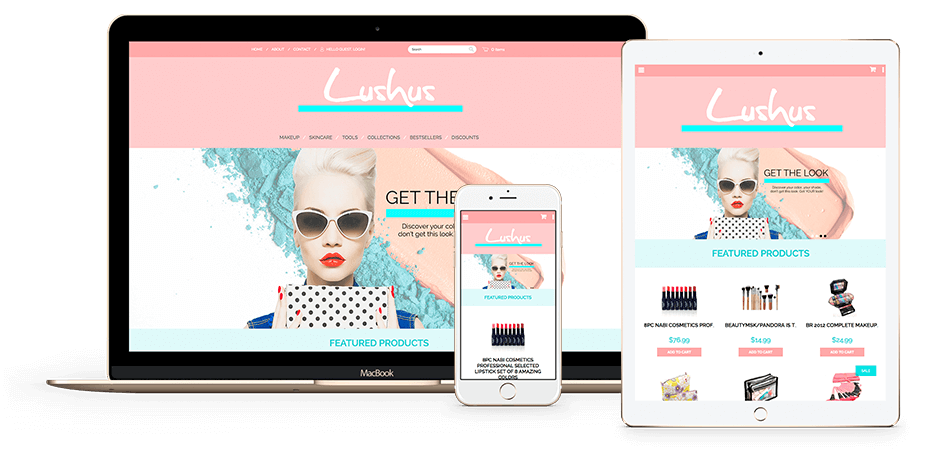Modern Web Site Design That Records Focus and Converts
In an increasingly electronic landscape, modern website style has actually emerged as a pivotal element in recording customer interest and driving conversions. By strategically using visual hierarchy, responsive formats, and engaging interactive elements, developers can produce experiences that not only draw in visitors but likewise facilitate purposeful interactions. Furthermore, effective call-to-action methods play a critical function in directing customers toward wanted outcomes. As we explore these important parts, it becomes clear that comprehending their interaction can dramatically impact a web site's efficiency and user satisfaction. What are the crucial elements that really make a distinction?
Significance of Visual Hierarchy
Visual hierarchy is a crucial element in web site layout, as it overviews individuals' attention and enhances their general experience. By tactically organizing web content, developers can direct users to one of the most vital details first, thereby boosting involvement and enhancing functionality. Reliable aesthetic power structure utilizes numerous techniques, consisting of size, shade, spacing, and contrast. Bigger elements naturally draw the eye, while contrasting shades can highlight essential messages, making them stand out amongst more suppressed parts.
Incorporating a sensible flow in web content arrangement is crucial; as an example, putting the most critical info at the top of a web page cultivates instant acknowledgment. Regular usage of typography, such as varying font sizes and styles, helps develop a clear web content structure. This organization not only aids in navigating yet additionally develops depend on, as customers really feel much more comfortable when they can easily discover what they are seeking.
Ultimately, a well-executed visual power structure not only improves aesthetic charm but likewise significantly impacts user behavior. By prioritizing important aspects and making certain a smooth experience, designers can successfully transform site visitors into clients, enhancing the value of this fundamental layout concept in modern internet site development.
Responsive Design for All Devices
Creating a seamless experience throughout numerous tools is essential in today's digital landscape, where users access sites from tablet computers, smartphones, and desktops alike. Responsive design is a critical technique that guarantees sites adjust fluidly to different screen resolutions, orientations, and dimensions. By employing flexible grids, pictures, and CSS media inquiries, designers can develop layouts that keep aesthetic integrity and capability, regardless of the tool being utilized.
The relevance of responsive layout extends past visual appeals; it straight affects customer interaction and conversion rates. A site that works well on all tools encourages longer sees and minimizes bounce rates, as individuals are most likely to connect with material that is very easy to navigate. Search engines, specifically Google, prioritize mobile-friendly sites in their rankings, making receptive layout an essential element of search engine optimization (SEARCH ENGINE OPTIMIZATION)
Incorporating responsive design not only improves customer experience but additionally improves the advancement process. By producing a solitary site that works across devices, businesses can conserve time and sources contrasted to establishing separate mobile and desktop versions. Ultimately, responsive layout is a fundamental technique for contemporary web site layout, making sure access and fulfillment for all individuals, no matter their tool.
Engaging Interactive Elements
While a responsive design lays the groundwork for a practical website, including appealing interactive elements is critical for catching individual interest and fostering much deeper connections. Website Design. Interactive elements, such as computer animations, tests, and clickable infographics, produce an extra vibrant customer experience, urging site visitors to invest more time on the site
Incorporating interactive functions can likewise direct users via complex details, making it less complicated to absorb content. For instance, interactive sliders can show product variations, while ingrained videos can provide demonstrations or endorsements that reverberate greater than fixed images or message. Gamification methods, like incentives for involving or finishing tasks with content, can improve individual inspiration and retention.
Reliable usage of interactive components not only improves the customer experience click here now however can likewise lead to higher conversion rates. It is crucial to balance interactivity with efficiency; extremely intricate attributes may impede website speed, adversely impacting customer contentment.
Streamlined Navigation Practices
Efficient navigation is a cornerstone of any type of effective internet site, as it straight influences individual experience and content availability. Structured navigation practices ensure that users can conveniently find details, enhancing their interaction with the site. A well-structured navigation food selection ought to be straightforward and instinctive, generally featuring a restricted number of key classifications to avoid overwhelming visitors.
To attain structured navigating, designers need to focus on a hierarchical framework that practically arranges content. Implementing breadcrumb routes can give users with context additional info about their current location within the site, allowing for smooth backtracking. Additionally, making use of drop-down food selections can successfully save space while still giving accessibility to subcategories.
Responsive layout is essential, as navigation must be useful throughout all gadgets (Website Design). Mobile individuals, in specific, take advantage of touch-friendly menus and retractable sections that keep usability without endangering aesthetic appeals

Reliable Call-to-Action Techniques
A well-crafted call-to-action (CTA) is important for leading customers toward wanted end results on a web site, as it motivates them to involve with content or purchase. To optimize their efficiency, CTAs ought to be clear, engaging, and purposefully put throughout the site.
First, utilize action-oriented language Read Full Report that communicates necessity or value, such as "Begin," "Join Currently," or "Insurance claim Your Discount rate." This language not only motivates individuals but also sets clear assumptions about the next actions.
Second, consider style aspects; CTAs need to stick out visually via contrasting shades, enough whitespace, and famous positioning. A button that is very easy to see and click rises the possibility of customer interaction.
In addition, customizing CTAs based upon user actions or demographics can considerably boost involvement. Customized messages resonate more with users, driving higher conversion prices.

Verdict
To conclude, modern-day website layout highlights the combination of aesthetic power structure, receptive designs, engaging interactive elements, streamlined navigation, and effective call-to-action methods. These components collectively improve customer experience, making certain that visitors continue to be engaged and motivated to check out web content better. By focusing on these style principles, services can significantly boost customer retention and conversion rates, eventually causing higher success in the electronic landscape. The constant development of web layout emphasizes its vital duty in efficient online interaction and advertising and marketing.
In an increasingly electronic landscape, modern-day website style has actually emerged as a critical element in capturing customer focus and driving conversions.Visual pecking order is a critical aspect in site design, as it overviews users' interest and improves their general experience.The value of responsive design extends beyond appearances; it directly affects individual involvement and conversion rates.Integrating receptive style not only enhances user experience yet also simplifies the development procedure. Ultimately, responsive style is a basic technique for contemporary site design, ensuring ease of access and fulfillment for all customers, no matter of their device.